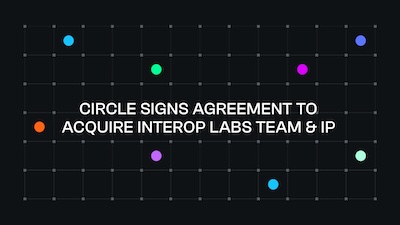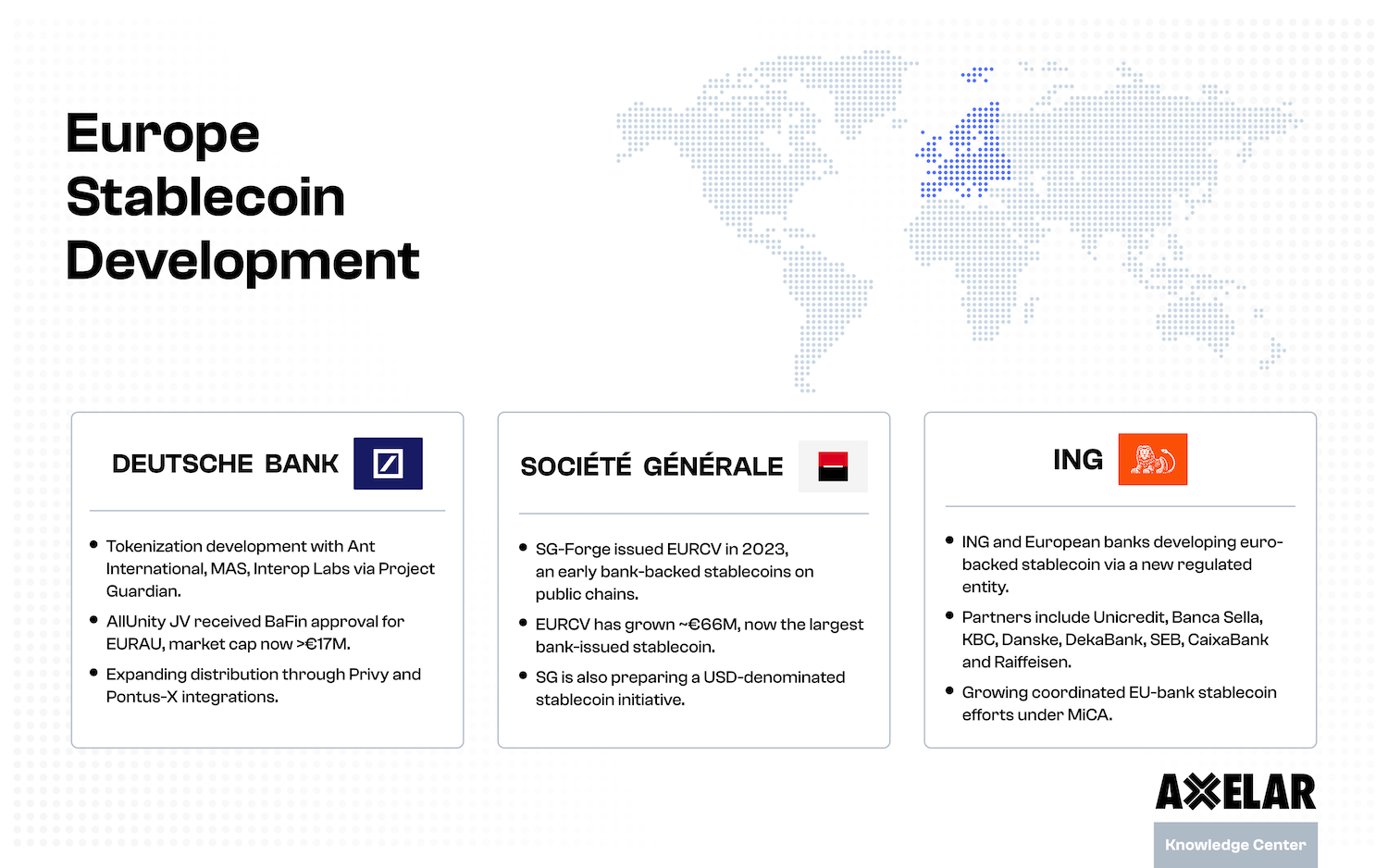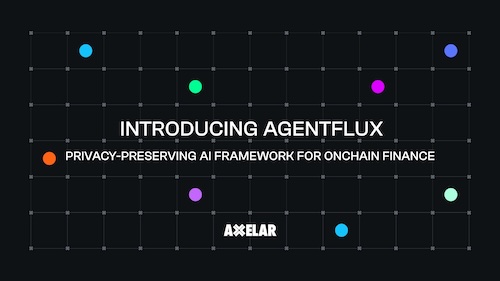An Overview of Cross-Chain Decentralized Exchanges
Table of Contents


While crypto exchanges have been prevalent for a long time, the ever-growing demand for decentralization has led to an exponential increase in the popularity of decentralized exchanges (DEXs). Unlike traditional centralized exchanges (CEXs), DEXs operate on a peer-to-peer (P2P) network, allowing users to trade cryptocurrencies directly without relying on a centralized intermediary.
Even though decentralized exchanges are a more secure and transparent alternative, they are not without limitations. Many exchanges often lack interoperability between different blockchain networks, supporting trading pairs only on a single blockchain. This limits users from accessing a wide range of cryptocurrencies and utilizing the platform to its optimal potential. Enter Cross-Chain Decentralized Exchanges!
Cross-chain DEXs enable users to seamlessly trade cryptocurrencies across different blockchain networks. In the current crypto landscape, the importance of cross-chain DEXs cannot be overstated. Apart from offering users the ability to access a broader range of cryptocurrencies, they also reduce the need to use multiple exchanges, especially centralized ones.
Here’s an overview of cross-chain DEXs, including how they work, their key benefits, and how Axelar is powering the next generation of cross-chain DEXs.
How does a Cross-Chain DEX work?
Currently, most blockchain networks operate in isolation, with their unique consensus mechanisms, programming languages, and data structures. Therefore, transferring assets and information between different networks can be challenging, limiting any platform or technology’s capabilities. However, through blockchain interoperability, various blockchain networks can communicate and exchange information with each other seamlessly.
Several interoperability solutions and protocols have been developed to solve the dilemma of interoperability and cross-chain communication. These solutions act as a bridge between the blockchain networks to ensure a flawless cross-chain asset transfer. While there is no standard mechanism for cross-chain communication that is utilized by all cross-chain exchanges, there are multiple ways they can create a cross-chain ecosystem.
One of the most common solutions is atomic swaps, which allow the exchange of assets between two blockchain networks without needing a trusted intermediary. Atomic swaps are based on smart contracts and involve using hash time-locked contracts (HTLCs) to ensure the transaction's security and validity.
Cross-chain DEXs also use bridges to facilitate cross-chain asset transfers. Bridges work by locking up assets on one blockchain network and issuing a corresponding token on another blockchain network, which represents the locked-up assets. The user can then trade this token on the cross-chain DEX for other assets on the second blockchain network. When the user wants to withdraw their assets, the relay module will unlock the original assets and transfer them back to the user's wallet on the original blockchain network. For example, if a user wants to trade an Ethereum-based token for a Bitcoin-based token, a relay would be used to transfer the tokens from the Ethereum network to the Bitcoin network, enabling the trade to occur.
Another solution is the use of sidechains, which are separate blockchain networks that are pegged to the main blockchain network. Sidechains allow for the transfer of assets between different blockchain networks, and they can support smart contracts and other advanced features.
Axelar utilizes its General Message Passing (GMP) capability to offer seamless cross-chain transfers by enabling developers to build on the chain they wish and utilize the best functions of other chains as well.
How Cross-Chain DEXs will power the future of DeFi
One of the most prominent use cases in the cryptocurrency ecosystem is Decentralized Finance (DeFi), which has been leading the charge in crypto adoption over the past few years. Decentralized finance includes various financial instruments that do not rely on centralized intermediaries, such as banks and brokerages, and are executed through smart contracts. As the DeFi ecosystem thrives on new users, platforms, and assets, seamless transactions and interoperability become increasingly important.
Centralized exchanges have been the prominent choice for multi-chain traders and investors for a long time, as CEXs efficiently handled cross-chain asset transfers. While the increased liquidity and fast transactions made CEXs the ideal choice for DeFi, cross-chain DEXs are now slowly taking over. With cross-chain DEXs, users can enjoy interoperability and participate in DeFi without limiting themselves to specific blockchain networks.
Here are some of the top features of cross-chain DEXs that will ensure they power the future of DeFi:
- Aggregated Liquidity: Since cross-chain DEXs tap into multiple blockchain networks, they offer aggregated liquidity to users. The cross-chain liquidity improves price discovery and reduces slippage while enabling users to trade a wider range of assets. With aggregated liquidity, cross-chain DEXs can offer better pricing and faster execution.
- No Central Authority: Cross-Chain DEXs are decentralized, meaning they have no central authority. This is in contrast to CEXs, which are controlled by a centralized entity. Decentralization reduces the risk of a single point of failure, improves security, and prevents censorship. Cross-Chain DEXs rely on smart contracts to manage the trading process without requiring a single entity to control the platform.
- Enhanced Security and Privacy: Since there is no central point of control, users have complete control over their assets and can trade in a more secure and private manner. Cross-Chain DEXs also use advanced cryptographic algorithms to secure the trading process, ensuring that user data and assets remain safe and private.
- Lower Fees: Unlike CEXs, DEXs do not require expensive infrastructure and support staff, which can reduce the operating costs of the platform. In addition, since there is no intermediary involved in the trading process, users do not have to pay fees to a third-party exchange. Therefore, users can enjoy lower fees than most traditional CEXs.
- Reduced Dependence on Centralized Exchanges: Cross-chain DEXs offer an alternative to centralized exchanges, which are often criticized for being susceptible to hacking and fraud. The infamous FTX debacle is a prime example of why centralized exchanges are not completely secure. Cross-Chain DEXs are designed to be more secure and transparent, offering users more control over their assets and reducing the need for intermediaries.
Conclusively, cross-chain DEXs bring about a plethora of enhancements over centralized exchanges. When it comes to DeFi, the adoption of cross-chain DEXs will only grow.
Key use cases of Cross-Chain DEXs
With highly scalable and beneficial use cases, cross-chain DEXs have extreme potential to revolutionize the DeFi space. Here are some key use cases that demonstrate the potential of Cross-Chain DEXs:
Cross-Chain Asset Swaps: One of the most significant advantages of cross-chain DEXs is the ability to swap assets between different blockchains. This enables users to easily trade tokens that would otherwise require multiple steps and intermediaries, as well as allows users to access assets that may not be available on their native blockchain.
Decentralized Asset Management: Cross-chain DEXs can manage decentralized asset portfolios across multiple blockchain networks. This enables users to manage and track their assets across blockchains without relying on a centralized exchange or intermediary. It also makes portfolio rebalancing by exchanging assets between different blockchain networks extremely easy.
Cross-Chain Lending and Borrowing: Cross-Chain DEXs can facilitate decentralized lending and borrowing across multiple blockchain networks. This can be useful for users who want to borrow or lend assets on different blockchain networks, such as borrowing Moonbeam-based tokens Bitcoin to trade for Ethereum-based tokens. This has enormous potential to be utilized for DeFi money markets, opening up endless possibilities.
Cross-Chain Trading: Finally, Cross-Chain DEXs can be used for trading assets on different blockchain networks. Users can execute these trades without relying on any central authority (as on a CEX) and enjoy reduced trading fees and improved liquidity for certain tokens. Trading through cross-chain DEXs without relying on a centralized exchange or intermediary also provides increased security and privacy.
Top Cross-Chain DEXs
Multiple cross-chain DEXs are implementing the above-mentioned use cases and many more! For example, Osmosis, a DEX based on Cosmos, enables users to seamlessly swap their assets across chains, participate in liquidity pools, and even stake their assets. Other DEXs, such as Chainflip and Kujira, have also implemented these use cases.
Similarly, SpookySwap, StellaSwap, or even today, Base enable users to bridge their assets for cross-chain asset transfers. QuickSwap, a leading cross-chain DEX, takes it one step further by utilizing cross-chain technology in gaming and predictions, offering users a unique opportunity to make the most of their assets.
How Axelar powers cross-chain DEXs
Although we are witnessing an exponential growth of multi-chain dApps, what is missing is the interoperability between networks for a truly seamless experience. To supplement the development of cross-chain applications, Axelar launched its General Message Passing (GMP) capability last year. With GMP, developers can do much more than wrap assets to transfer them from one blockchain to another.
Axelar’s GMP enables developers to choose the ideal blockchain for the required use case and call any function on any connected chain, irrespective of the chain they are building on. To explain things seamlessly, the word “function” includes both smart contracts at the application layer (as on EVM chains) and logic built at the protocol layer (as on Cosmos chains). With GMP, developers can build with complete interoperability, enabling users to interact with any asset, any application, on any chain, with just a single click.
Moreover, General Message Passing handles everything with utmost decentralization, ensuring developers and users can experience cross-chain communication with utmost security. GMP utilizes a permissionless delegated proof-of-stake validator set to ensure security and a decentralized protocol that manages routing and translation, enabling applications to function securely across different chains. Axelar is built on the same proof-of-stake security model as the chains it connects. This opens up a wealth of use cases and opportunities for developers.
How does General Message Passing work?
The GMP process is seamless and only takes approximately 120 seconds for gateway-to-gateway completion. However, for the capability to work, both Source Chain and Destination Chain must be EVM chains with a deployed Axelar Gateway contract. Stay tuned: GMP is coming to Cosmos soon! Follow us on Twitter to stay updated.
Here’s how General Message Passing enables developers to seamlessly implement cross-chain transfers:
- dApp developer implements the Axelar Executable interface in the destination contract;
- A call function (or a call function + tokens) from Source Chain is initiated;
- The call enters the Axelar Gateway from Source Chain;
- Axelar network confirms the call, subtracts the usage fee (in native Source Chain tokens), and prepares an outgoing transaction on the Destination Chain;
- The call is approved and emerges from the Axelar Gateway on the Destination Chain;
- The call function executes as if it had been made on the Source Chain and results accordingly.
Axelar currently supports 30+ blockchains, including Avalanche, Binance, Ethereum, Fantom, Moonbeam, Polygon, and Stargaze, with many more to be integrated soon. The possibilities with GMP are limitless, as it can facilitate extremely potential and powerful use cases in gaming, NFTs, and DeFi, powering up the next-gen cross-chain DEXs.
Interested in using GMP and building with Axelar? Check out our docs on General Message Passing to know more, and reach out to us on Axelar Discord for any questions.


